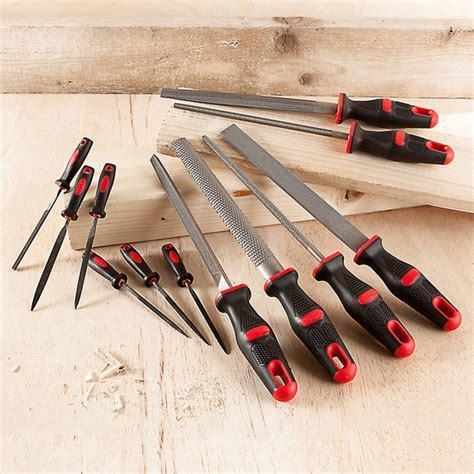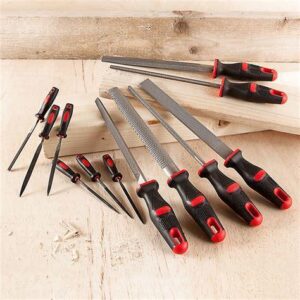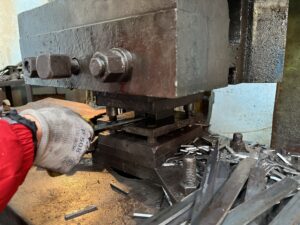First, the concept of file cutting and the structure of file
The concept of filing; The operation of filing excess metal from the surface of a part to achieve the size, shape, and surface roughness required by the drawing is called filing. Its application range is very wide, can file the workpiece of the outer surface, the inner hole, the groove and a variety of shapes complex surface.
File is the main tool for file cutting. It is generally made of carbon tool steel T12, hardened after heat treatment, and the hardness of its cutting part reaches more than 58HRC.
Structure of file: file is mainly composed of file body and file handle. File teeth can be divided into single and double teeth. Single teeth only one direction teeth, often used for file cutting soft materials such as aluminum, copper; Double teeth have two direction teeth, suitable for filing hard materials and removing oxide skin.
Two, the classification of file
File is divided into ordinary file, plastic file (or called assorted file) and special file. Among them, ordinary file is used most.
Ordinary file. Ordinary file according to its cross section shape can be divided into flat file, half round file, square file, triangle file and round file five kinds. These files are the main file cutting tools used by fitters in daily processing, as shown in the figure below.
Flat file for: file cutting plane, surface;
Square file for: file cutting grooves, square holes;
Triangle file is used to: file the triangle groove, and the inner corner;
Used of a half-round file; File the inner curved surface, big round hole;
Round file is used to file round holes and small radius holes.
Plastic file (mixed file). It is mainly used for fine machining and trimming the small parts that are difficult to be machined on the workpiece. It consists of a set of files of various section shapes.
Special file. For processing parts special surface, it has straight, curved two, its section shape is a lot.
Three, file specifications and selection
Common file body length is 100 ~ 400mm various specifications, file teeth are divided into coarse, fine and other specifications.
Coarse file used for processing soft materials, such as copper, lead, etc., or rough processing;
Fine file is used to work hard materials
Fine tooth file for fine processing;
Each file has its main purpose, should be selected according to the workpiece surface shape and size.
Four, the use of file and operation steps
The formulation of file: due to the different sizes and shapes of various files, their grip is also different.
Grip method of large file: the right hand holds the handle of file, and the left hand has a variety of positions according to the size of file and the weight of force.
The holding method of the middle file: the right hand holds the same as the large file, and the left hand holds the front end of the file with the thumb and index finger.
Grip method of small file: right index finger straight, thumb on the handle of the file, index finger against the edge of the file, left several fingers pressed in the middle of the file.
Application of file cutting force; The motion of the file should be flat so that the torque at both ends of the file is balanced.
Problems to pay attention to when using file
The file is only applied for cutting when pushing forward. When returning, the file can be returned without applying force or cutting, otherwise it is easy to cause premature wear of the file; When filing, the total pressure on the file can not be too large, because the file tooth storage space is limited, too much pressure can only make the file wear faster.





